Conservation of linear momentum and its application
The second law and the third law led to important consequences - the Law of conservation of momentum.
Statement: When the net force on a system is zero, the angular momentum of the system is conserved.
Let’s take an example of a gun and bullet system.
The Gun exerts a force F on the bullet, the bullet also exerts the same force F but in the opposite direction, so the net force on the gun-bullet system is zero. So total linear momentum of the system remains conserved
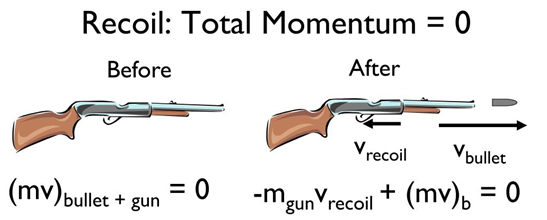
Thus in an isolated system, the mutual force between pairs of particles of the system can cause momentum change in individual particles. Since the mutual forces for each pair are equal and opposite, the momentum changes cancel in pairs and the total momentum remains unchanged. This law is called the law of conservation of momentum.
The important application of the conservation of linear momentum is that when there is a collision between two particles, their momentum before and after the collision is conserved. Momentum conservation holds for both elastic and inelastic collisions.

By conservation of momentum
Another application is rocket propulsion
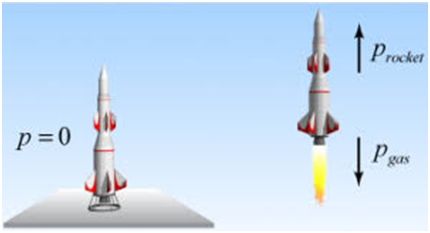
Rockets have a gas chamber at one end of it. From this chamber, gas ejected with enormous velocity. Before the ejection of the gas, the total momentum is zero. Due to the ejection of the gas from the rocket, the rocket gains a recoil velocity and acceleration in the opposite direction. This is because of the conservation of momentum.
Equilibrium of concurrent forces
Conservation of momentum holds when no force is acting on the system. Gravity and friction forces are such forces that are always there on earth. So in most practical cases, it is not true that no force is acting on the system.
But we can have the net force acting on the system be zero. When all the forces acting on the system balance each other then we can say that the net force on the system is zero and thus conservation of momentum holds for such cases too, this is called equilibrium of concurrent forces.
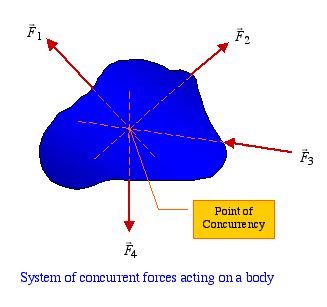
Here
When there are two forces acting on the particle and net force on the particle is zero. We have
Similarly in the case of three concurrent forces F1, F2 and F3
We have
On comparing the components of I, j and k on both sides we have
The sum of the x-component of all the concurrent force=0
Similarly, the sum of y and z components of all the concurrent forces is zero.
Lami’s theorem : Equilibrium of three force
If three concurrent forces are acting on a body kept in equilibrium, then each force is proportional to the sine of the angle between the other two forces and the constant of proportionality is the same.
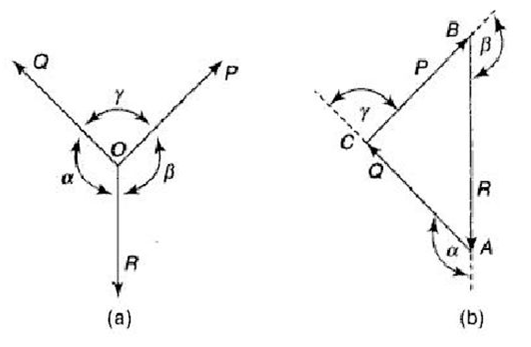
We have
While applying Lami’s theorem in the free body diagram of a body we draw the direction of force either towards or away from the point of concurrency.
Some common forces in Mechanics
There are various kinds of forces in Mechanics. We will discuss contact and non-contact forces here.
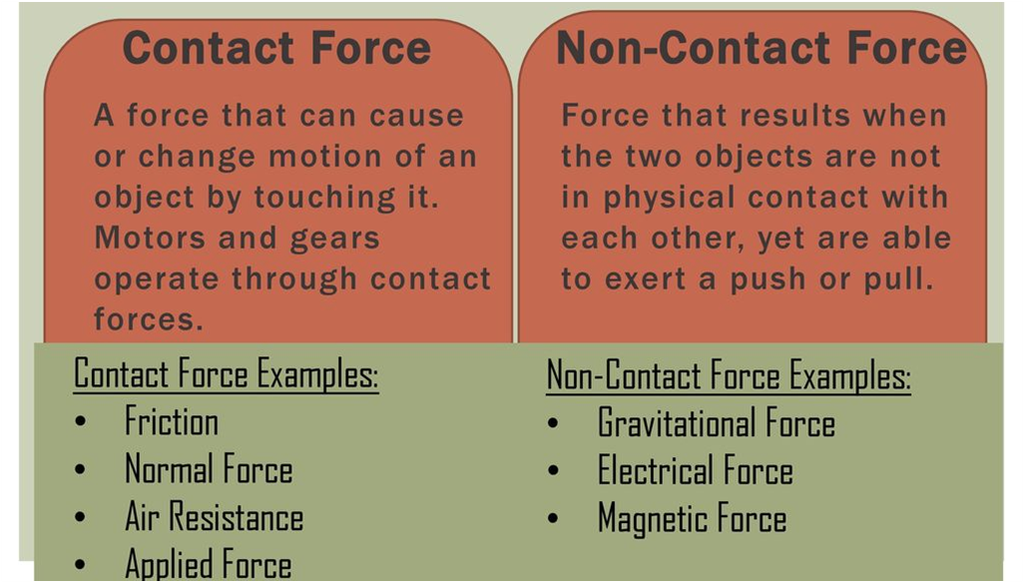
Non-contact force: Does not require direct contact between the body and the agency of force. These forces do not come under the branch of mechanics. We will study them later. For example electrostatics force, magnetic force etc.
Contact force: which requires direct contact between the body and the agency. Some of the contact forces are Tension force, normal force, friction force, spring force, etc.
Tension force: It is a tension in the string due to which it balances the madd tied to it. A tension force is a force developed in a rope, string, or cable when stretched under an applied force. This force is acted along the length of cable/rope in a direction that is opposite to the force applied to it.
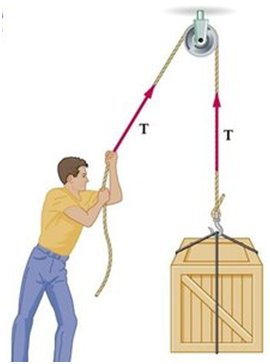
Normal force: The normal force is the force that surfaces exert to prevent solid objects from passing through each other. If two surfaces are not in contact they can’t exert a normal force on each other.
For example: If a book is resting upon a surface, then the surface is exerting an upward force upon the book in order to support the weight of the book.
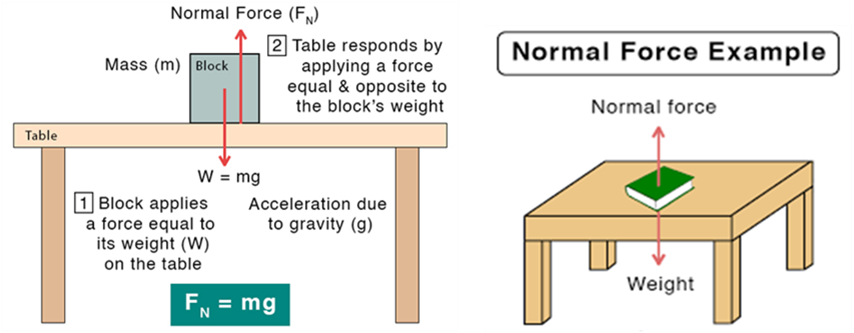
Friction force: When two objects are in contact and one object moves or intends to move, then a force develops between the two surfaces called frictional force.

Force in the spring
It is the restoring force that restores the spring to its original length. Spring force is the force required or exerted to compress or stretch a spring. When an object applies a force to a spring, then the spring applies an equal and opposite force to the object.
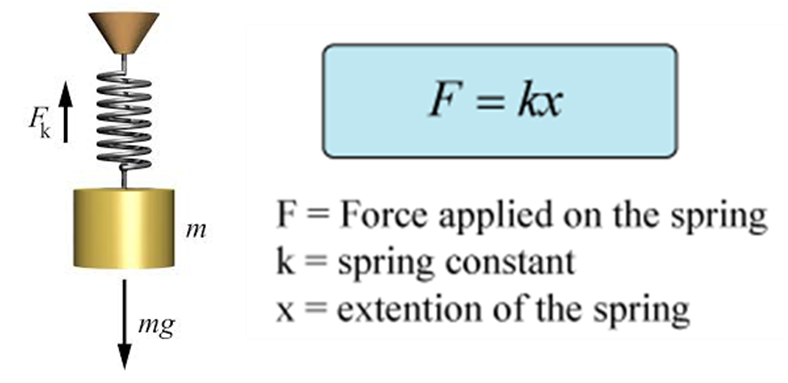
Pseudo forces: When we observe any object with respect to an accelerated body then there is a force acting on the object which we are observing. This force is called pseudo force. This is an imaginary force.
For example: If we are sitting in an accelerating car and observing the body outside the car, then a pseudo force will act on that body.
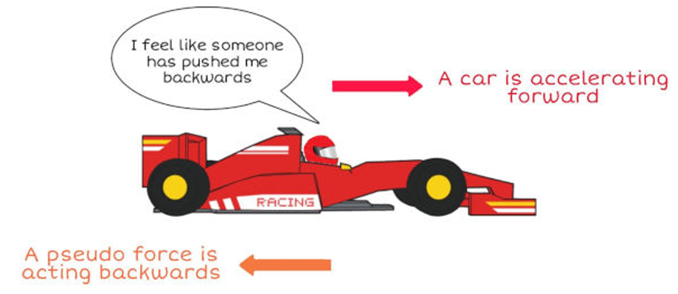
Static and kinetic friction

Have you noticed that when you push a box by applying a force F and it doesn’t move where does this Force F go?
According to Newton’s first law if the object remains at rest then the net force on the body must be zero. The question is which force balances the applied force when the body doesn’t move?
The answer to this question is Friction force.
When we apply a force on the object at rest, there is friction between the object and the surface that opposes the applied force.
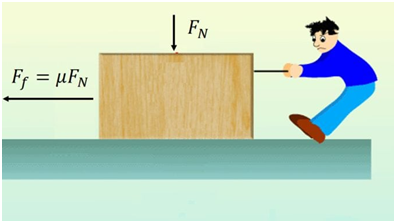
The tangential component of the force of interaction between two surfaces in contact is called friction. It leads to resistance against movement between the surfaces and can cause mechanical deformation and heating. Friction depends on the type of the contacting surfaces. It is high for rough and dry surfaces and low for wet and smooth ones.
When we roll a ball on the floor, it stops after some time due to the force of friction acting on it opposite to the motion.
Types of Friction:
Depending on whether the surfaces are at rest or in relative motion against each other, the friction divides into static and kinetic friction.
Kinetic friction: The retarding force between two objects in contact that are moving against each other is called Kinetic friction.
Where
Kinetic friction remains constant between two surfaces, regardless of the relative speed of their movement. The coefficient of kinetic friction has a constant value for each pair of contacting surfaces (materials). For example it is 0.57 for steel / steel contact, 0.47 for steel / aluminum contact, etc.
Static friction: The force that has to be overcome in order to get something to move is called static friction.

In order to make a stationary object move, we have to overcome the static friction force with an applied force. When a small force is applied to a nonmoving object, the static friction is of equal magnitude, but in the opposite direction to the applied force. When the force is being increased, at a certain point it reaches the maximum static friction value. At that point, the static friction is overcome and the object starts to move.
On solid surfaces, static friction occurs as a consequence of the surface roughness of the objects in contact. Its value depends on the type of the contacting surfaces. It is higher for rough and dry surfaces and lowers for wet and smooth ones.
The force necessary to induce motion is always bigger than the one necessary to continue the motion. So the kinetic friction coefficient is smaller than the static friction one.
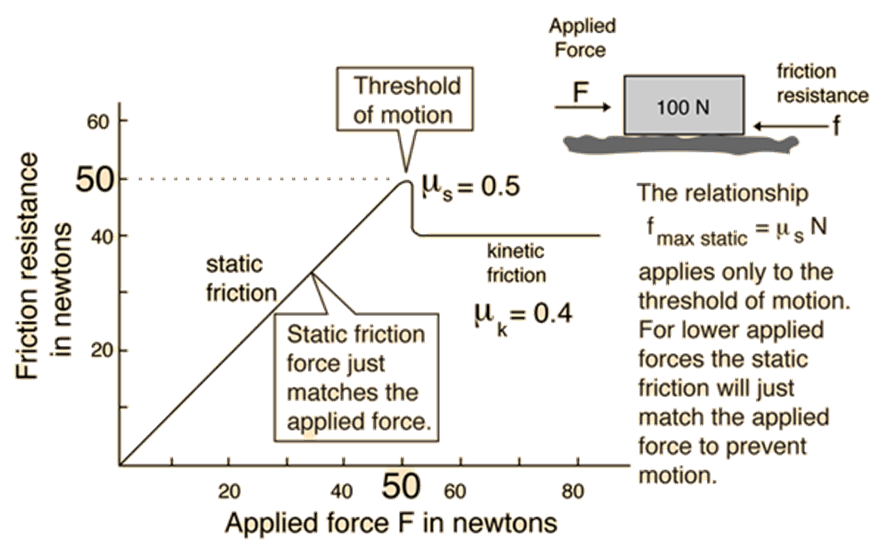
Static and kinetic friction in an inclined plane
This is the force that prevents an object, placed on a sloped surface, from sliding.
When we place an object on an inclined plane and it remains stationary, this happens due to status friction. The gravity force on the object down the slope is actually balanced by the static friction in the opposite direction.
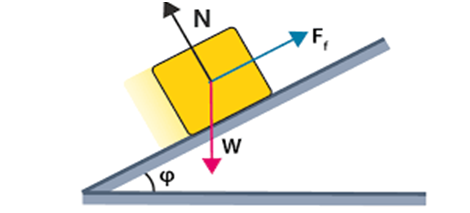
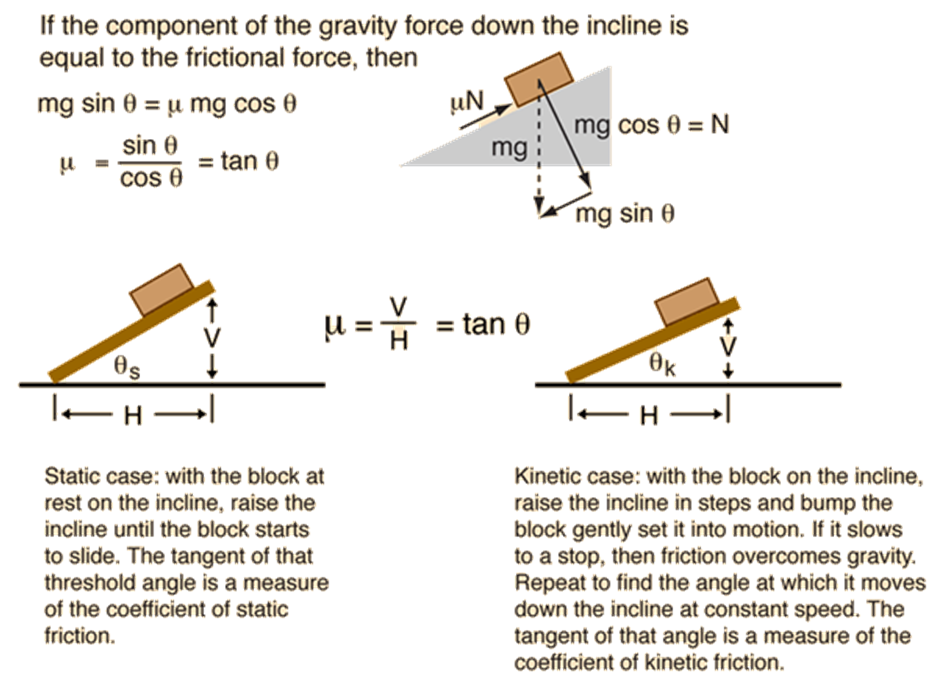
Laws of friction
What are the Laws of Friction?
There are five laws of friction and they are:
- The friction of the moving object is proportional and perpendicular to the normal force.
- The friction experienced by the object is dependent on the nature of the surface it is in contact with.
- Friction is independent of the area of contact as long as there is an area of contact.
- Kinetic friction is independent of velocity.
- The coefficient of static friction is greater than the coefficient of kinetic friction.
Rolling friction
Rolling friction occurs when a wheel, ball, or cylinder rolls freely over a surface, as in ball and roller bearings.
A rolling wheel requires a certain amount of friction so that the point of contact of the wheel with the surface will not slip. The amount of grip of the tires on the road which can be obtained for an auto tire is determined by the coefficient of static friction between the tire and the road. If the wheel is locked and sliding, the force of friction is determined by the coefficient of kinetic friction and is usually significantly less.
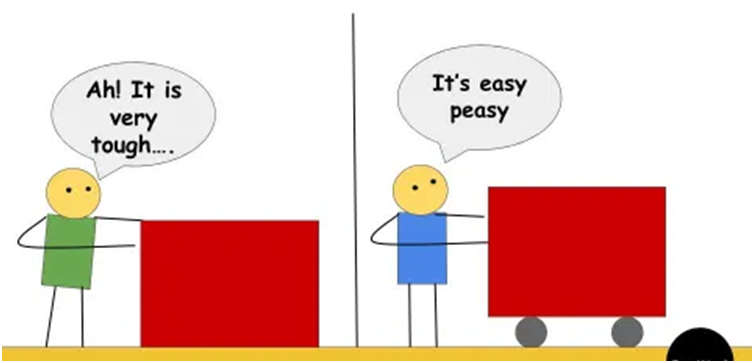
Assuming that a wheel is rolling without slipping, the surface friction does not work against the motion of the wheel and no energy is lost at that point. However, there is some loss of energy and some deceleration from friction for any real wheel, and this is sometimes referred to as rolling friction. It is partly friction at the axle and can be partly due to flexing of the wheel which will dissipate some energy.

 Madhava Publications
Madhava Publications
